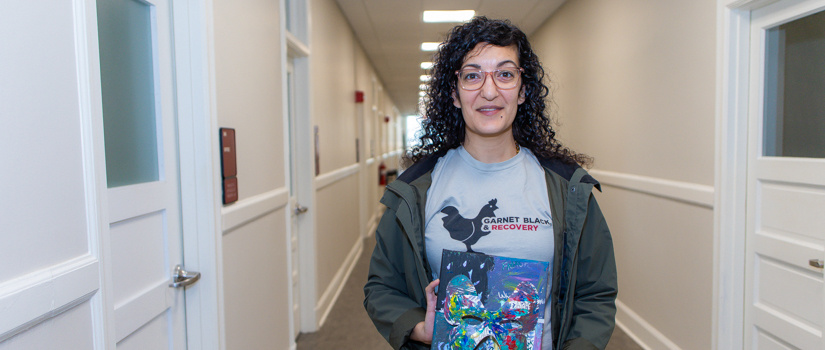March 31, 2020
Chris Woodley • cwoodley@mailbox.sc.edu
Art therapy is sometimes used in addiction recovery. Individuals use creativity and imagination to expresses ideas and feelings in a healthy and productive way. Gamecock Recovery, which is affiliated with the university’s Substance Abuse Prevention and Education office, utilizes meetings, workshops and social events to support students in addiction recovery by assisting them in creating a successful collegiate experience. MSW student and Gamecock Recovery participant Suhad Saadeh helped organize a project for students in recovery to tell their stories through art.
All art pieces were created by students in Gamecock Recovery to share their experiences. The program was presented through the Stop the Addiction Family Epidemic Project. The national non-profit works to overcome the nation’s addition epidemic and was founded in 2017 by Admiral James and Mary Winnefeld, following the death of their 19-year-old son Jonathan to an accidental opioid overdose. SAFE contacted college students across the country and encouraged them to organize an impact project that focused on recovery. The goal was to either create awareness of an existing collegiate recovery program or start a new project by developing a safe environment for students in recovery.
Saadeh initially had an idea for an art project. While talking with Margaret Nevergoll and Aimee Hourigan of the SAPE office, she learned that they had funding for an art project, but no activities planned.
“SAFE does not provide funding, so it was a perfect match for me to carry out their impact project,” Saadeh says. “Margaret and Amy have been incredibly helpful in organizing timelines and materials and spreading the word about the exhibit.”
Each art piece consisted of a mask and canvas. The mask represents how the student is perceived in recovery or how they want people to see them. The canvas shows the hidden part of the student’s life.
“It was interesting to see how the art pieces were not the same for everyone,” Saadeh says. “Some people's masks were positive, with a negative canvas. It was reversed for others as some felt they were perceived in a shameful way but underneath had positive views about themselves. The project is about a student’s journey before, during and after recovery and how people perceive them.”
Saadeh hopes that the art pieces help spread awareness of the programs and support system that Gamecock Recovery offers.
“It’s important to start conversations and not be afraid to dialogue about Gamecock Recovery and how it can help students,” said Saadeh. “Just having that dialogue might peak someone’s curiosity about how we can support and help students in recovery.”
